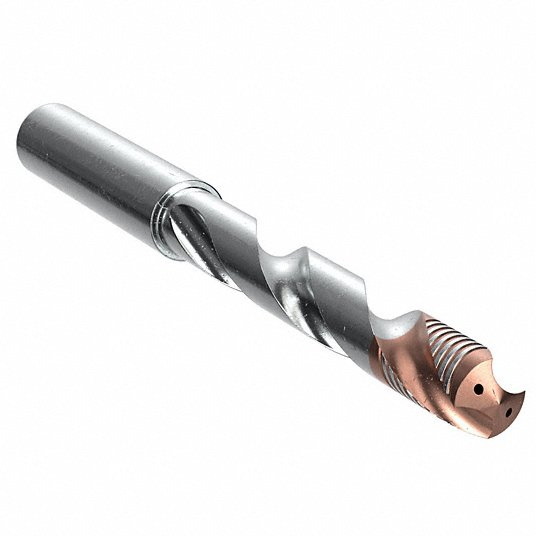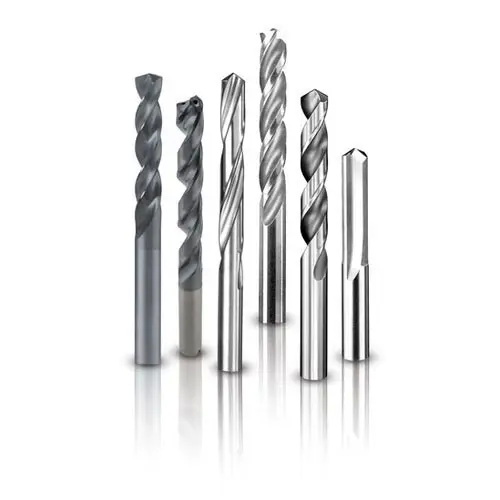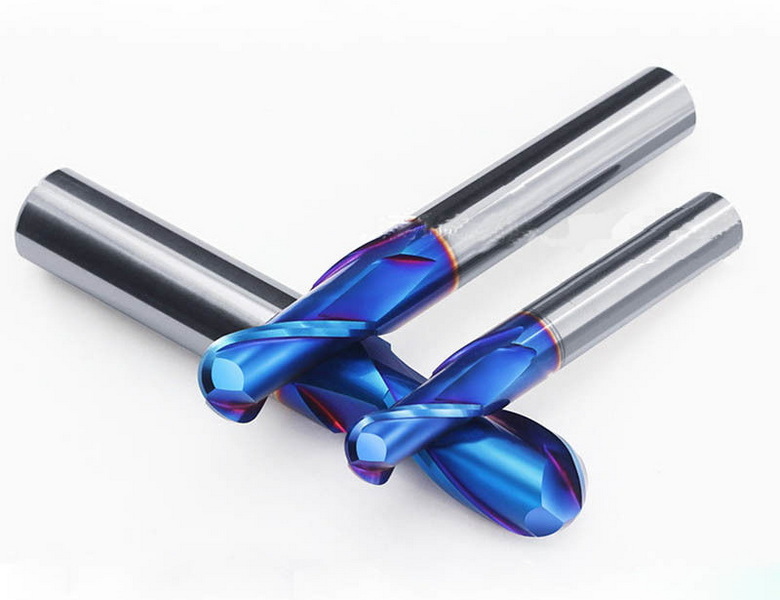Content Menu
● Introduction to Carbide Products
>> Carbide Production Overview
● Raw Material Preparation
>> Mixing with Binder
● Shaping the Carbide Mixture
● Sintering Process
● Finishing Processes
● Detailed Explanation of Each Step
>> Raw Material Preparation
>> Mixing and Shaping
>> Sintering and Finishing
● Advanced Technologies Used in Carbide Production
● Environmental Considerations and Sustainability
● Case Studies of Successful Carbide Products
● Future Trends in Carbide Product Manufacturing
● Applications of Carbide Products
● Challenges and Innovations
● Conclusion
● Frequently Asked Questions
>> 1. What is the primary method used for manufacturing carbide products?
>> 2. What are the key components of tungsten carbide?
>> 3. What are the main applications of carbide products?
>> 4. How does the sintering process affect carbide products?
>> 5. Can carbide products be recycled?
● Citations:
Carbide products are crucial in various industries, including industrial manufacturing, military applications, metallurgy, oil drilling, mining tools, and construction. The production process in a carbide products factory involves several complex steps, from raw material preparation to final product machining. This article will delve into the detailed manufacturing process, highlighting key stages and techniques used in producing high-quality carbide products.

Introduction to Carbide Products
Carbide products, particularly tungsten carbide, are renowned for their exceptional hardness, wear resistance, and durability. These properties make them ideal for demanding applications where high performance and longevity are essential. The primary components of tungsten carbide include tungsten and carbon, often combined with a metallic binder like cobalt to enhance toughness and durability.
Carbide Production Overview
The manufacturing process of carbide products primarily involves powder metallurgy, a technique that allows for precise control over material properties and complex shapes. The process includes several stages: raw material preparation, mixing, shaping, sintering, and finishing.
Raw Material Preparation
The first step in producing carbide products is preparing the raw materials. Tungsten and carbon are the primary components, sourced from tungsten ore and high-purity carbon black or graphite, respectively. Tungsten ore is refined to obtain tungsten oxide, which is then reduced to pure tungsten powder in a hydrogen atmosphere at high temperatures (typically between 600°C and 1,000°C).
Mixing with Binder
After obtaining the tungsten powder, it is mixed with carbon to form tungsten carbide powder. This mixture is then combined with a metallic binder, usually cobalt, in specific proportions. The binder enhances the toughness and workability of the final product. Other additives like titanium carbide or tantalum carbide may be included to improve specific properties such as wear resistance or thermal stability.
Shaping the Carbide Mixture
The homogeneous mixture of tungsten carbide and cobalt is then shaped into the desired form using various methods such as pressing, extrusion, or injection molding. These techniques allow for the creation of complex shapes and precise dimensions.
Sintering Process
Sintering is a critical step in the manufacturing process. The shaped carbide inserts are placed in a high-temperature furnace, typically heated to around 1,400°C, where the cobalt binder melts and bonds the tungsten carbide particles together, forming a solid and dense structure.
Finishing Processes
After sintering, the carbide products undergo various finishing processes to achieve the desired dimensions and surface quality. Techniques such as grinding, polishing, and coating may be applied to enhance performance and extend tool life.

Detailed Explanation of Each Step
Raw Material Preparation
- Tungsten Ore Refining: Tungsten ore is processed to extract tungsten oxide, which is then reduced to tungsten powder.
- Carbon Source: High-purity carbon black or graphite is used to form tungsten carbide.
Mixing and Shaping
- Powder Mixing: Tungsten carbide powder is mixed with cobalt and other additives to achieve the desired composition.
- Shaping Techniques: Pressing, extrusion, and injection molding are used to shape the mixture into the required form.
Sintering and Finishing
- Sintering Process: High-temperature sintering bonds the carbide particles together.
- Finishing Techniques: Grinding and polishing are used to achieve precise dimensions and surface quality.
Advanced Technologies Used in Carbide Production
Advanced technologies play a crucial role in enhancing the efficiency and quality of carbide products. Some of these technologies include:
- Hot Isostatic Pressing (HIP): This process improves the density and uniformity of carbide products by applying high pressure and temperature.
- 3D Printing: Allows for the creation of complex geometries and customized carbide products.
- Nanotechnology: Enhances material properties by incorporating nanoparticles into the carbide matrix.
Environmental Considerations and Sustainability
The production of carbide products involves several environmental considerations:
- Resource Conservation: Recycling of tungsten and other metals reduces waste and conserves resources.
- Energy Efficiency: Modern manufacturing facilities focus on reducing energy consumption through efficient processes and equipment.
- Waste Management: Proper disposal and recycling of waste materials are essential to minimize environmental impact.
Case Studies of Successful Carbide Products
Several successful applications of carbide products highlight their versatility and effectiveness:
- Industrial Cutting Tools: Carbide cutting tools are widely used in machining operations due to their durability and performance.
- Military Applications: Tungsten carbide is used in armor-piercing projectiles for its high density and hardness.
- Oil Drilling Bits: Carbide bits are used in drilling operations for their wear resistance and durability.
Future Trends in Carbide Product Manufacturing
Future trends in carbide manufacturing focus on improving efficiency, sustainability, and product performance:
- Advanced Materials: Research into new materials and compositions to enhance specific properties.
- Digitalization: Integration of digital technologies to optimize production processes and product design.
- Sustainability Initiatives: Increased focus on recycling and reducing environmental impact.
Applications of Carbide Products
Carbide products are versatile and find applications in numerous industries:
- Industrial Manufacturing: Carbide cutting tools are used in machining operations like turning and milling due to their hardness and wear resistance.
- Military Applications: Tungsten carbide is used in armor-piercing projectiles and other military equipment due to its high density and hardness.
- Metallurgy: Carbide tools are used in metal processing for their ability to withstand high temperatures and abrasive conditions.
- Oil Drilling and Mining: Carbide bits are used in drilling operations for their durability and resistance to wear.
- Construction: Carbide-tipped tools are used in construction for tasks like drilling and cutting through hard materials.
Challenges and Innovations
The production of carbide products faces challenges such as maintaining uniformity and density, ensuring precise control over material properties, and reducing production costs. Innovations like hot isostatic pressing (HIP) have improved the density and uniformity of carbide products, enhancing their performance in demanding applications.
Conclusion
The production process in a carbide products factory involves a sophisticated combination of raw material preparation, mixing, shaping, sintering, and finishing. The use of powder metallurgy allows for precise control over material properties, making carbide products ideal for various industrial applications. As technology advances, innovations in manufacturing techniques continue to improve the performance and efficiency of carbide products.

Frequently Asked Questions
1. What is the primary method used for manufacturing carbide products?
Answer: The primary method used for manufacturing carbide products is powder metallurgy, which involves mixing tungsten carbide powder with a binder, compacting the mixture, and then sintering it at high temperatures.
2. What are the key components of tungsten carbide?
Answer: Tungsten carbide primarily consists of tungsten and carbon, often combined with a metallic binder like cobalt to enhance toughness and durability.
3. What are the main applications of carbide products?
Answer: Carbide products are used in industrial manufacturing, military applications, metallurgy, oil drilling, mining tools, and construction due to their hardness and wear resistance.
4. How does the sintering process affect carbide products?
Answer: The sintering process transforms the shaped carbide inserts into a solid and dense material by melting the cobalt binder, which bonds the tungsten carbide particles together.
5. Can carbide products be recycled?
Answer: Yes, carbide products can be recycled. Worn-out tools and scrap material can be reclaimed and reused, reducing waste and conserving resources.
Citations:
[1] https://www.hannibalcarbide.com/technical-support/about-carbide/
[2] https://www.youtube.com/watch?v=zJkVi0cmtX0
[3] https://www.mmc-carbide.com/in/technical_information/tec_guide/tec_guide_carbide
[4] https://www.generalcarbide.com/wp-content/uploads/2019/04/GeneralCarbide-Designers_Guide_TungstenCarbide.pdf
[5] https://www.zgcccarbide.com/news/The-Manufacturing-Process-of-Cemented-Carbide-Inserts:-A-Comprehensive-Guide-39.html
[6] https://www.tool-tool.com/news/201202/cutting-tool-manufacturing-process/index.html
[7] https://www.carbide-products.com/blog/how-is-carbide-made/
[8] https://www.retopz.com/57-frequently-asked-questions-faqs-about-tungsten-carbide/
[9] https://carbideprovider.com/carbide-production-process/
[10] https://www.kovametalli-in.com/manufacturing.html
[11] https://www.allied-material.co.jp/en/techinfo/tungsten_carbide/process.html
[12] https://www.manufacturingtomorrow.com/article/2019/08/5-ways-carbide-metal-compound-is-used-in-the-manufacturing-industry/13794
[13] https://www.psmindustries.com/yillik/tungsten-carbide-manufacturing-process
[14] https://www.youtube.com/watch?v=0QwfBueMjY4
[15] https://www.ceratizit.com/int/en/company/passion-for-cemented-carbide-/production.html
[16] https://www.allied-material.co.jp/en/techinfo/hard-metal/process.html
[17] https://enterclimate.com/calcium-carbide-manufacturing-unit-setup
[18] https://data.mmc-carbide.com/7916/5839/0884/tec_guide_carbide_02_en.png?sa=X&ved=2ahUKEwi00c2NlcaMAxW2SGwGHfknNlkQ_B16BAgIEAI
[19] https://www.shutterstock.com/search/production-carbide?image_type=photo&page=2
[20] https://stock.adobe.com/search/images?k=carbide+cutting
[21] https://www.istockphoto.com/photos/carbide-tools
[22] https://www.istockphoto.com/photos/carbide-bit
[23] https://www.shutterstock.com/search/carbide
[24] https://www.gettyimages.in/photos/union-carbide-factory
[25] https://www.shutterstock.com/search/carbide-turning
[26] https://www.shutterstock.com/search/production-carbide?image_type=photo&page=3
[27] https://www.shutterstock.com/search/union-carbide
[28] https://stock.adobe.com/search?k=carbide
[29] https://www.linkedin.com/pulse/tungstencarbide-production-process-tungsten-carbide-shijin-lei
[30] https://www.alamy.com/stock-photo/union-carbide.html
[31] https://guide.resumegemini.com/interviews/top-10-questions-for-carbide-powder-processor-interview/
[32] https://www.everloy-cemented-carbide.com/en/knowledge/faq.html
[33] https://sfscarbide.com/about-us/faq/
[34] https://www.tungco.com/insights/blog/frequently-asked-questions-used-tungsten-carbide-inserts/
[35] https://byjus.com/chemistry/calcium-carbide/
[36] https://tuncomfg.com/about/faq/
[37] https://www.ukowiretools.com/faq/
[38] https://www.sandvik.coromant.com/en-gb/services/recycling/faq-carbide-recycling
[39] http://www.bortome.com/news/eq/
[40] https://www.mmc-carbide.com/in/technical_information/tec_guide/tec_guide_safely
[41] https://patents.google.com/patent/US4008090A/en
[42] https://generalcarbide.com/pdf/General-Carbide-Designers-Guide-Tungsten-Carbide.pdf
[43] https://www.youtube.com/watch?v=0QrynzJ_lZ4
[44] https://www.gettyimages.in/photos/union-carbide-factory-in-bhopal
[45] https://www.bbc.com/news/articles/cgj6e1e2688o
[46] https://www.istockphoto.com/photos/carbide
[47] https://www.theatlantic.com/photo/2014/12/bhopal-the-worlds-worst-industrial-disaster-30-years-later/100864/
[48] https://www.bbc.com/news/articles/cp35vlg3zvxo
[49] https://www.vedantu.com/chemistry/carbide
[50] https://www.tjtywh.com/frequently-asked-questions-about-calcium-carbide-procurement-how-to-avoid-quality-issues-and-supply-shortages.html
















